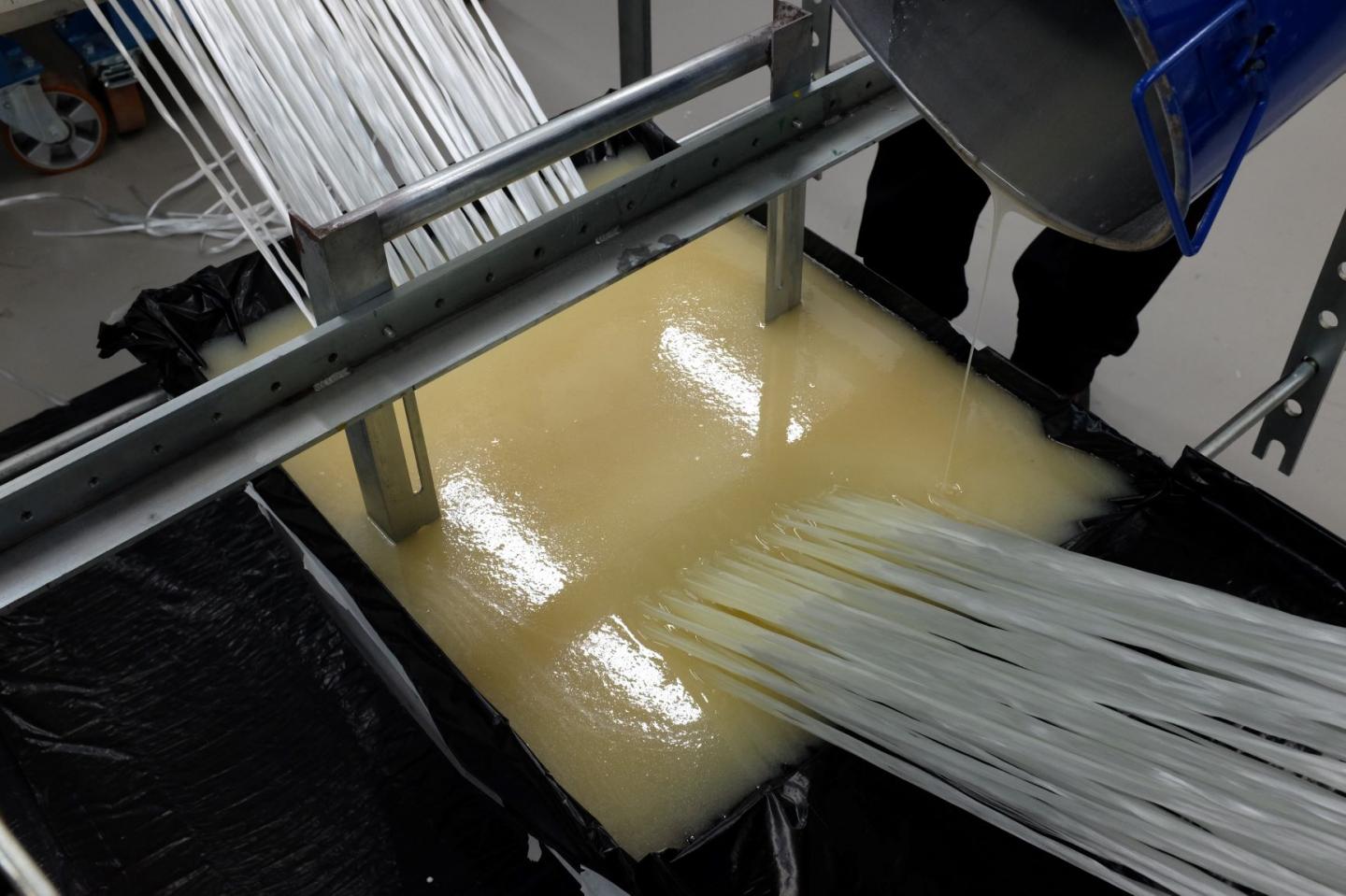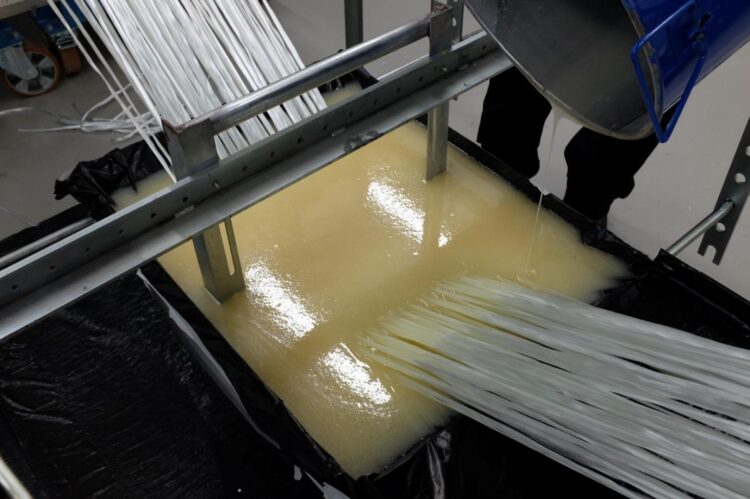
Credit: Timur Sabirov / Skoltech
A research team from the Skoltech Center for Design, Manufacturing and Materials (CDMM) studied the effects of processing additives – aluminum hydroxide and zinc stearate – on the polymerization kinetics of thermosets used in pultrusion. The research was published in the Journal of Composite Materials.
Fiber-reinforced plastic (FRP) structural elements that have obvious advantages over conventional materials, such as steel, wood, and concrete, are widely used in civil, marine and road construction. FRP structures are manufactured using the pultrusion process, in which polymerization is achieved by continuously pulling the material. Engineers extensively use mathematical models to optimize the pultrusion process and thereby avoid costly experiments often performed by trial and error.
To optimize the pultrusion process, one should carefully consider many parameters that determine the quality of the final product, and composition of the polymer mixture is one of them. Accurate description of pultrusion requires an appropriate model of resin cure kinetics, depending on the processing additive used. If properly chosen, the model helps determine the highest possible pulling speed. In turn, maximizing the pulling speed while maintaining the quality of the resulting profiles is essential for enhancing the efficiency and, therefore, the cost effectiveness of the pultrusion process.
A CDMM team, including PhD student Alexander Vedernikov and MSc student Yaroslav Nasonov led by associate professor Alexander Safonov and CDMM director, professor Iskander Akhatov, proved that additives have a considerable impact on the speed of polymerization in pultrusion. The team found that the pulling speed predictions differed by as much as 1.7 times for compositions with and without additives, which had a dramatic effect on the pultrusion performance.
“Our Laboratory of Composite Materials and Structures is intensively working on process optimization in order to increase profitability while maintaining the required quality of composite structures. To do this, we apply mathematical models of manufacturing processes and validate them in experiments on industrial equipment,” Alexander Safonov explains.
###
Media Contact
Ilyana Zolotareva
[email protected]
Original Source
https:/
Related Journal Article
http://dx.





